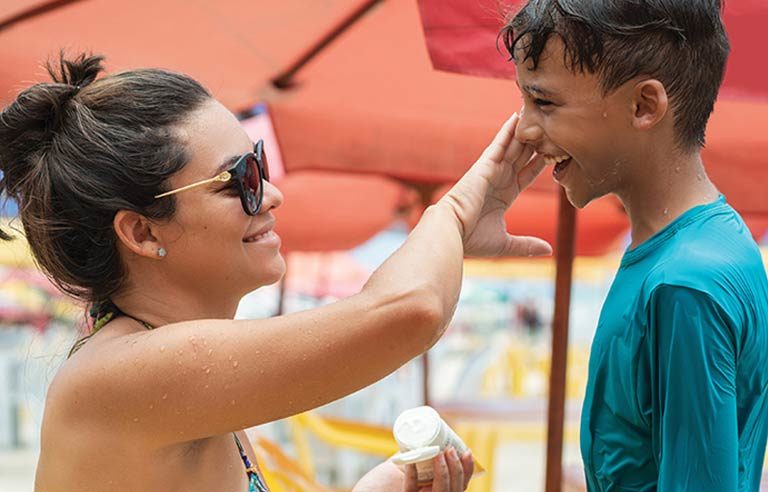Safe fun in the sun

Sunglasses
Wearing sunglasses outside not only can protect your eyes from UV rays but also can reduce your risk of developing cataracts, according to the Centers for Disease Control and Prevention. Look for sunglasses that block both UVA and UVB rays. The good news: Most sunglasses sold in the United States – even the least expensive ones – typically do. Check for a label that reads “UV absorption up to 400 nm” or “Meets ANSI UV requirements,” the ACS says.
“Those labeled ‘cosmetic’ block about 70% of UV rays,” the society’s website states. “If there is no label, don’t assume the sunglasses provide any UV protection.”
The FDA says many light-tinted glasses (green, amber, red and gray) can protect your eyes just as well as dark-tinted ones. Wraparound sunglasses work the best because they block UV rays from the sides of your face.
Hats and other protective clothing
Sunglasses are most effective when paired with sunscreen and a wide-brim hat, according to the FDA. Ideally, the brim should be about 2 to 3 inches around the hat. This will help protect your ears, forehead, nose and scalp. Dark, nonreflective material on the underside of the brim can lessen the UV rays reaching your face from reflective surfaces such as water or sand.
If you like wearing caps, use one that has a sun shield – a covering that drapes over the neck/eyes – for extra protection. Wear long-sleeved shirts, pants or skirts when possible to protect against the sun’s rays. If that’s not practical, even a T-shirt or beach cover-up (when paired with sunscreen) will help.
Protecting kids
Infants younger than 6 months old should be kept out of direct sunlight, the American Academy of Pediatrics says. And when they’re outdoors, they should be dressed in lightweight, long pants; a long-sleeved shirt; and a brimmed hat. If any areas of their skin are exposed, such as the face and back of the hands, apply an SPF 15 sunscreen.
As with adults, children should put sunscreen on about 15 minutes before going outdoors, but be careful when applying it around their eyes. Kids also should wear sunglasses with UV protection. Choose carefully: The FDA warns that toy sunglasses may not provide adequate protection. Once again, check for a UV protection label and find a pair that fits your child well.
“Children need special attention,” the ACS says. “They tend to spend more time outdoors, can burn more easily and may not be aware of the dangers. Parents and other caregivers should protect children from excess sun exposure.”
Post a comment to this article
Safety+Health welcomes comments that promote respectful dialogue. Please stay on topic. Comments that contain personal attacks, profanity or abusive language – or those aggressively promoting products or services – will be removed. We reserve the right to determine which comments violate our comment policy. (Anonymous comments are welcome; merely skip the “name” field in the comment box. An email address is required but will not be included with your comment.)
